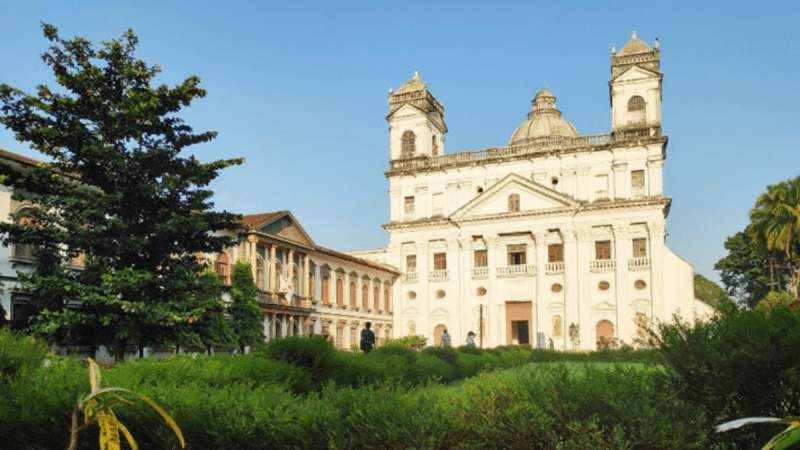Nestled amongst the grand churches and colonial architecture of Old Goa lies a lone sentinel – Adil Shah’s Palace. This seemingly unassuming structure, crafted from black basalt, is all that remains of a once-majestic palace, a silent testament to a bygone era.
Sultanate Splendour To Colonial Custody
Adil Shah’s palace… pic.twitter.com/tttiutvSYs
— The Dodo (@TinderBox2) August 17, 2018
The palace was built in the early 16th century by Yusuf Adil Shah, the Sultan of Bijapur. This grand structure served a dual purpose – a luxurious summer residence and a strategic fort, boasting an arsenal and a moat for defence. However, its reign was short-lived. In 1510, the Portuguese seized control of Goa, and the palace underwent a significant transformation.
The Portuguese adopted the palace as the residence of their Governors. They renamed it the Idalcao Palace, a corruption of the Sultan’s name. The building witnessed centuries of Portuguese rule. It even served as a temporary abode for incoming and outgoing Viceroys during the handover of power.
Despite its new occupants, the palace couldn’t withstand the ravages of time. Abandoned during a plague outbreak in the 17th century, it slowly fell into disrepair. The final blow came in 1820 when the Portuguese government ordered its demolition, with the salvaged materials used for new construction projects in Panjim.
Also Read: From Heritage Palaces To Boutique Villas, 11 Best Stays For Your Dream Holi Getaways This Year
Gateway to Goa’s Past
View this post on Instagram
Today, the sole survivor stands proudly – the grand gateway. Its intricate carvings and imposing presence hint at the grandeur of the lost palace. This historical remnant serves as a valuable reminder of Goa’s rich and multifaceted past. Here, Islamic and European influences intertwined to create a unique cultural tapestry.
For history buffs and architecture enthusiasts, the Gateway offers a glimpse into a bygone era. Standing before this solitary structure, one can’t help but imagine the opulence of the palace that once stood behind it. It is a silent guardian whispering tales of a time when Goa was a vibrant centre of power and cultural exchange.
Also Read: From Goa To Odisha, 8 Places To Watch Turtle Hatchlings In India
Intriguingly, some believe another section of Adil Shah’s legacy might still exist, albeit in a different form. The colonial facade of Goa’s Secretariat hides a fascinating secret. Rumor has it, the building wasn’t entirely new. Instead, it rose on the very foundations of the palace’s administrative wing, a silent testament to its history. While Portuguese influence dominates the exterior, whispers of the Sultan’s reign linger beneath the surface, waiting for future exploration to unearth the truth.
Cover Image Courtesy: https://www.goa.gov.in/
For more such snackable content, interesting discoveries and the latest updates on food, travel and experiences in your city, download the Curly Tales App. Download HERE. First Published: April 12, 2024 6:01 PM




